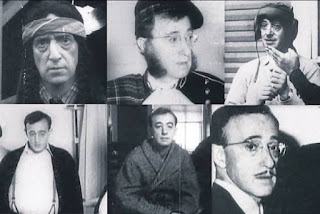14.1.2014
Hicret OSTA
The Chrysanthemums and The Penelopiad
If there is a story from mythology,
it cannot be the story of women and men or relationships between them. It is
only the story of men, and women are objects in there. However, although
Margeret Atwood uses characters and
plot from Greek mythology in The
Penelopiad, she can deal with the hegemony of men over women through the
voice of story-teller which belongs to the first-person. Because the
protaganist of The Penelopiad is a
woman and she talks to us as the first-person narrator throughout the novel,
this point of view generates majority of a woman’s perception of many events. So,
readers do not only expose to the perception, experiences, emotions, thoughts
as well as acts of a woman, but also they hear all them from a subjective voice.
Therefore, it is easy to acknowledge realities of women’s world which consist
of the double standards and the hegemony of men. In this sense, Margeret Atwood
says that in the beginnig of her book:
I’ve
chosen to give the telling of the story to Penelope and to the twelve hanged
maids. The maids form a chanting and singing Chorus which focuses on two
questions that must pose themselves after any close reading of The Odyssey: what led to the hanging of
the maids, and what was Penelope really up to?
Similarly, there is a female
protaganist which is named Elisa Allen in The
Chrysanthemums by John Steinbeck. The character also has deppressed mode
and lives with emotional presure. However, we do not hear her voice directly,
because the author introduces her from the third person point of view. Readers
can recognize Elisa and her borring life thanks to her acts, clothes, the
pattern of her behaviour, and dialogues between her and men. “Elisa
straightened her back and pulled on the gardening glove again. “Yes. They’ll be
strong this coming year.” In her tone and on her face there was a little
smugness.” as in this sentence.
In my opinion, although the themes of
two literary texts are similar and a woman is the centre of these stories, the
choices of the different narrative technicques have extra meanings. A possible
one is that although Steinbeck’s narrator stands close to Elisa, its voice is
more objetive than the narrator of Atwood. It voices all things as they are.
So, readers can understand the feelings of Elisa impartially. However, Atwood
does not leave it to luck and she enables Penolope to talk to readers with her
feelings. So, a feminist perspective in The
Penelopiad can be felt easily. Because
readers identify themselves with Penelope by directly hearing many events from
her, they find themselves in Penelope. This provides more partial perspective.
In two literary texts, the
protagonists have similar life style and no problem seemingly. Although they
are married to responsible men who are have a house, a business, wealth, and so
on, they feel compressed and have to create a closed world because of the
double standards and ambiguities in their lives. Their own worlds which are also
similar at least their pains and experiences may be named their “sanctuary” or
“hudud”, because the women only let valuable materials (for them) be in there. Of
course, these materials differentiates from each other the aspect of
appearence, but have the same functions in their lives.
In this sense, it can be said that the
chrysanthemums of Elisa are equal to the maids of Penelope, and they are also
the symbolic challenge of the women against the external environment. Elisa
just is happy and interested in others when she talks about her flowers.
Although she refuses that “the man on the wagon” asks her to “mend pots and
sharpen knives and scissors” a few times, she gives a few pots to him after he
mentions the chrysanthemums. So, the man values her world and can understand
her by talking about the flowers. Identically, Penelope struggles against
“suitors” by means of “the maids”.
In conclusion, because the female
protagonists think that the world is wrong with them and cannot exist powerfully,
they choose to make some weapons which are the flower ara the maids against the
external world and can fight for survival by means of them.



